Have you ever daydreamed about leaving modernity and all its trappings behind, heading to the woods, and starting a new life in the wild? Out with the traffic, paperwork, and online gossip—In with the rivers, woodwork, and twittering birdsong! It’s not as easy as it sounds, as this retired mathematician will attest to—but that doesn’t mean it is impossible.
This is the inspirational story of a nature-loving cabin enthusiast who set out to do what most of us only muse about in our headiest moments. Over a decade, this man and his family labored away at restoring what most would have dismissed as a lost cause, turning it into a rustic monument of pride. Read on to learn more about his story.
Richard And His Family Moved To Springfield, Missouri
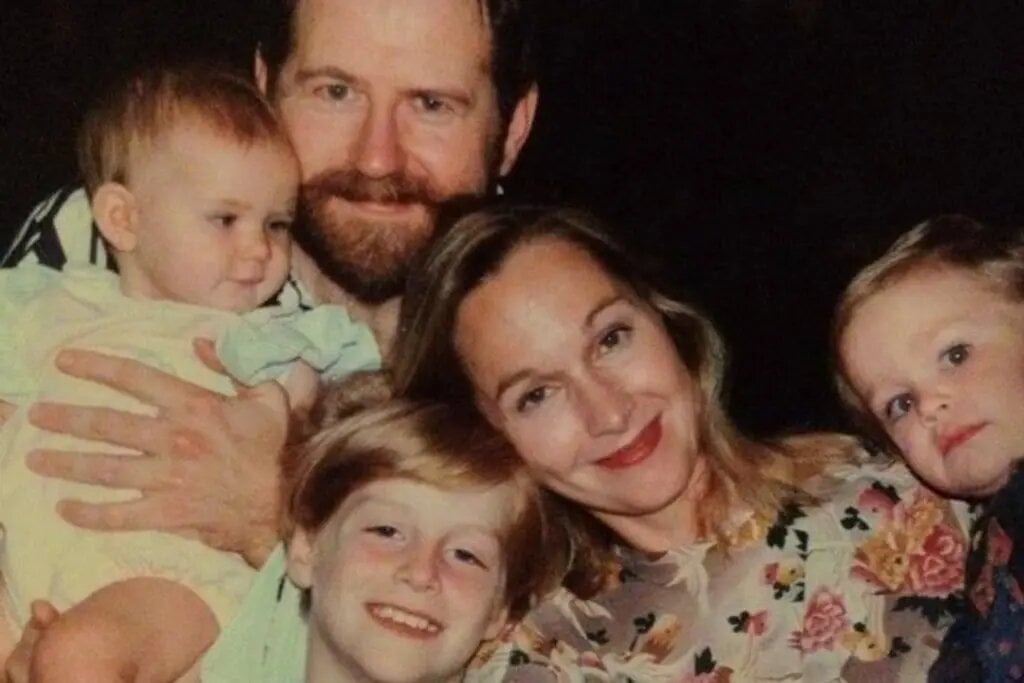
Richard Aiken was a young doctor whose profession had him moving all over the United States and other places such as Europe. These experiences were obviously very exciting and memorable, but he decided that he wanted to settle down.
Richard and his wife, Mary, had three wonderful children together. They felt it was time to move to a more permanent location and create a routine with their kids. Miraculously, the right position fell into Richard’s lap and the Aiken family moved to the hilly Ozarks of Springfield, Missouri from St. Louis.
Richard Was A DIY Man With A DIY Dream
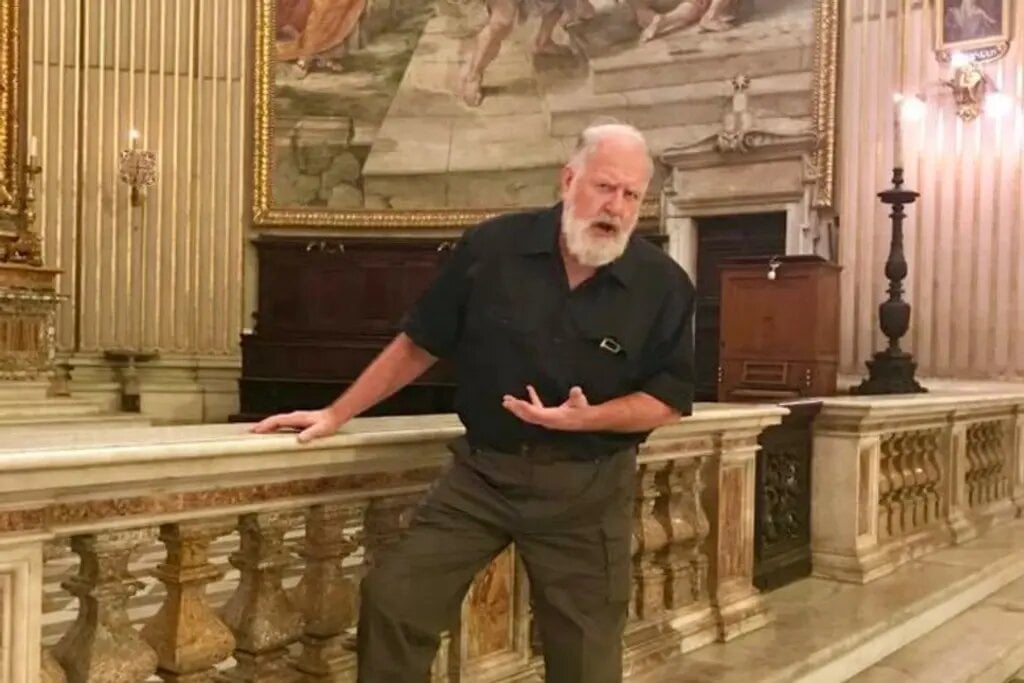
Richard wanted to live out his realized dream of restoring a log cabin in the forest to become his own, even though he had no experience with fixer-up projects. So, he chose to find an old cabin, fix it up, and restore it on his own land.
Boasting impressive experience throughout his time as a doctor, Richard clearly had a sharp mind. He did, after all, have several degrees and trekked all over the world sharing his remarkable knowledge with others. Was it possible that Richard could step into the mindset of a fixer-upper? Let’s find out.
A Raw Deal
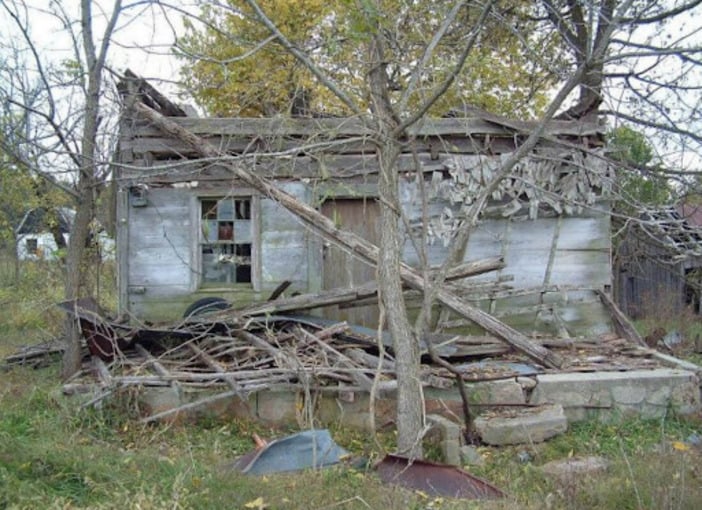
To a casual passerby, this might just look like a hunk of junk under a bunch of brambles in the middle of nowhere. But to Richard Aiken, this pile of wood had the potential to serve as the perfect getaway home for him and his family. It’s certainly difficult to see under all that mess!
Richard took his first look at this place sometime in 2001 and decided it would one day become his ideal hideaway—a home away from home. Back then, the cabin was already around sixty-five years old. There would be much work to be done, to say the least.
A Trek In The Woods
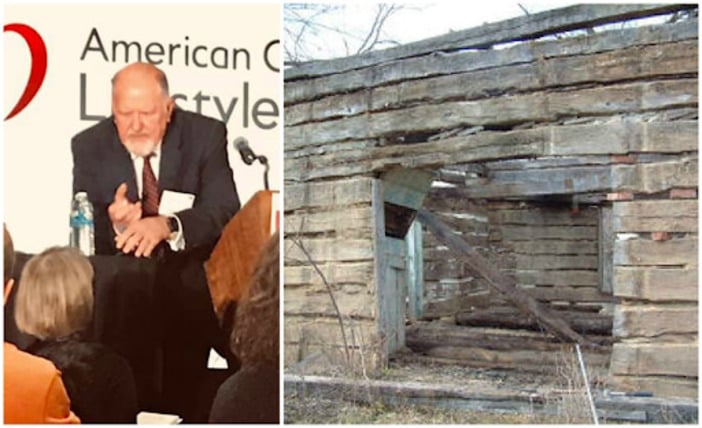
Richard was a mathematician by trade, a vegan, and an avid lover of the great outdoors. He’s also a family man. As time would reveal, he also had a few skills in construction, renovation, and rustic decor. He’s quite the renaissance man!
Allegedly, he came across the cabin on a walk one day in the Missouri woodlands. He stood there alone and imagined a life spent amongst the trees and the birds. He already had some property in the wild but no shelter of any kind. He had an idea and put his mind to work.
One Man’s Trash
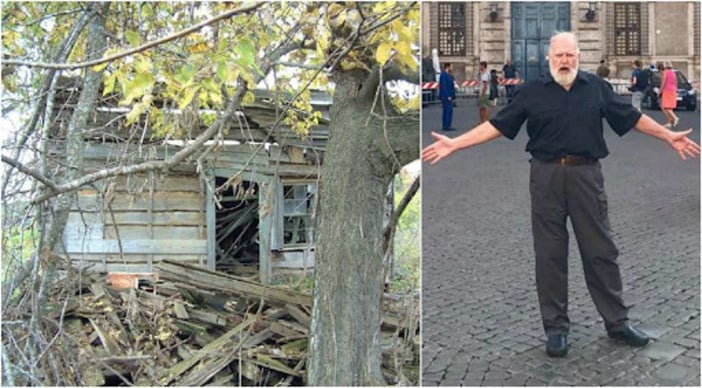
After thinking long and hard about the project, Richard decided to buy in. He reached out to the owner of the rundown cabin and asked him how much it would cost to take the structure off his hands. The owner of the cabin obviously wasn’t using it.
As it turned out, the owner was more than happy to let it go. Richard didn’t exactly have to haggle down the price. Legend has it that the original owner of the cabin sold it to Richard for as little as $100. This must have seemed like a bargain to Richard.
What The Family Thought
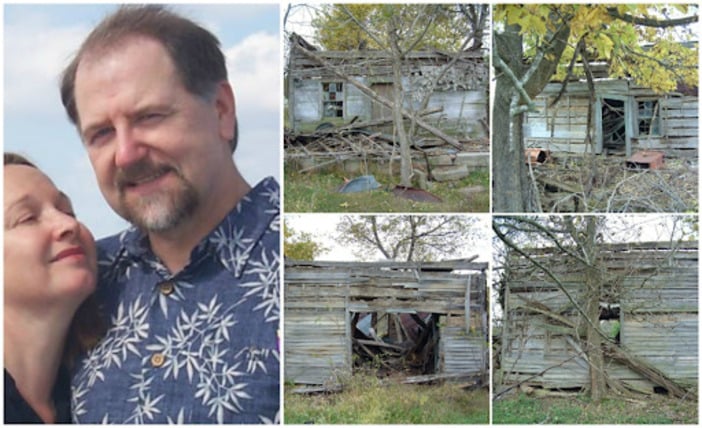
To any witnesses of this sale, $100 must have seemed like a crazy amount to spend on a rundown structure. His family probably thought nothing of it. Just another one of dad’s little projects. Maybe they thought it would give him something to do once in a while.
Somewhere to go and tinker, maybe get a little exercise. Having retired, Richard had plenty of time on his hands. If only they’d known how much time this project would take! But Richard made it clear that he wouldn’t be leaving them for that secluded place in the wilderness.
They Wanted “A Back-To-Basics Homestead”
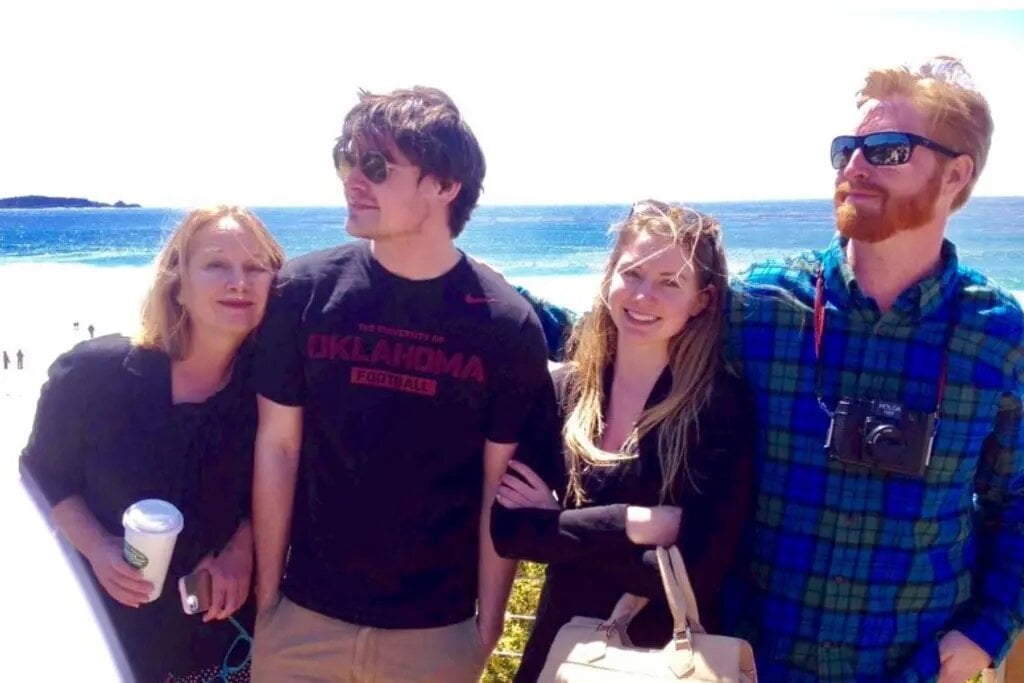
Richard and Mary wanted a complete change in their lifestyle after they moved to Springfield. In Aiken’s video, Man Restores Cabin, he described how they strove for a simpler way of life. “We sought land in a back-to-basics homestead,” Aiken explained.
Not only did they want a simpler life, but also a stronger connection to nature. He expressed in the video, “Our realtor was happy to see my wife cry at the beauty of one wooded rolling hill property that we later purchased. At that sight, we created the Lake of Happy Tears.”
Richard Had A Deep Respect For Nature

The appreciation for a simpler life stems back to Richard’s deep roots in nature. After he had dedicated his time to learning about science, nature, and culture, he made the wise decision of becoming a vegan — which is where he got his Hillybilly Vegan nickname. He believed that a diet that didn’t include animals or dairy was the best thing for him and the planet.
Aiken had a plant-based pickup that carried all of his yummy vegan food. The profound respect for nature and the world that surrounded him was the main inspiration for Richard’s great idea. This wouldn’t be the only DIY project that he would commit to, though!
Clearing Out The Mess
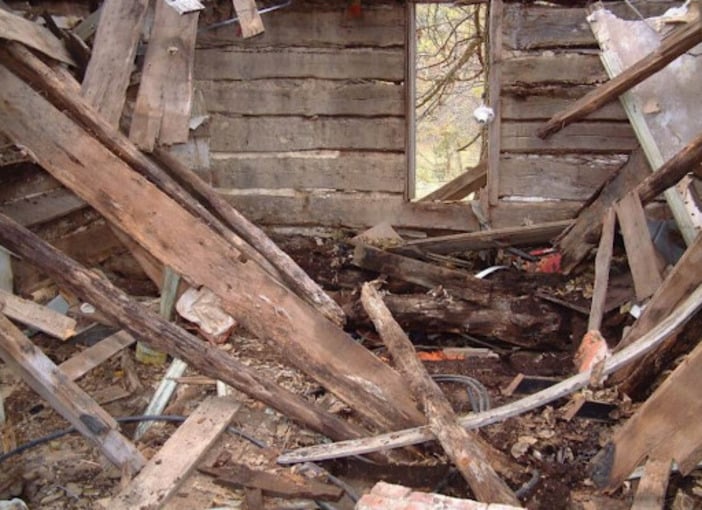
Richard planned to relocate the structure and place it on his land. But first, he would need to clear out all the debris inside—and there was a lot of it. Rotten wood, discarded building materials, dead leaves, dirt, and all kinds of other junk lay waiting for him.
Richard soldiered on, inspired by images of rugged, outdoor living. If anything, this would be the easiest part of the project. Fresh air, exercise, and peace—not a bad way to spend your free time! After Richard had the inside cleared, he moved on to the next job.
Nothing Pretty To Look At
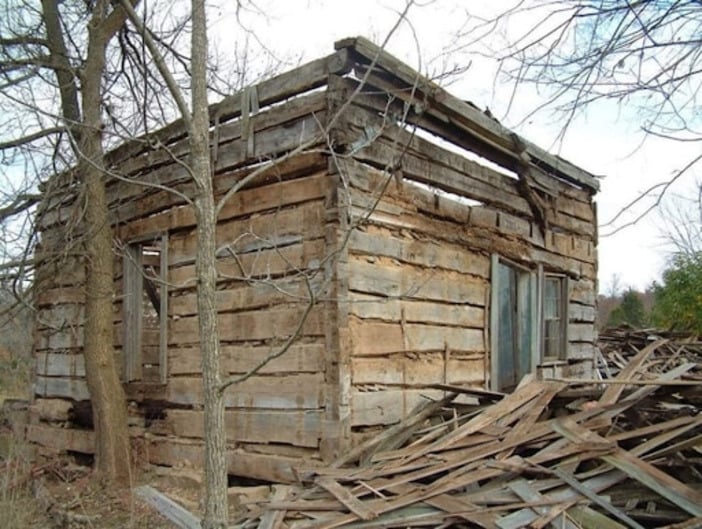
Most of the debris on the inside had come from the collapsed roof. And the outside was a complete mess, too, on all sides. The cabin itself was flanked by brambles, deadwood, and trash. Richard ordered in a dumpster and got hauling!
Just standing near any of the walls was a health hazard. The top planks were unstable, and the remaining parts of the roof were dangling too. Like a sculptor chiseling away at a block of stone, Richard uncovered his prize one fallen, rotten plank at a time.
What Remained

With all the debris cleared away and the brambles and twigs trimmed back, Richard was able to assess his properly. Many of the wooden beams making up the four walls were still sturdy. They would suffice for his cozy hideaway.
The roof, however, was out of the question. It had weathered much of the damage brought about by time’s passing and would not be of any use as a cover. The old roof would have to go, and a new roof would need to be constructed once the four walls were moved.
Marked For Transport
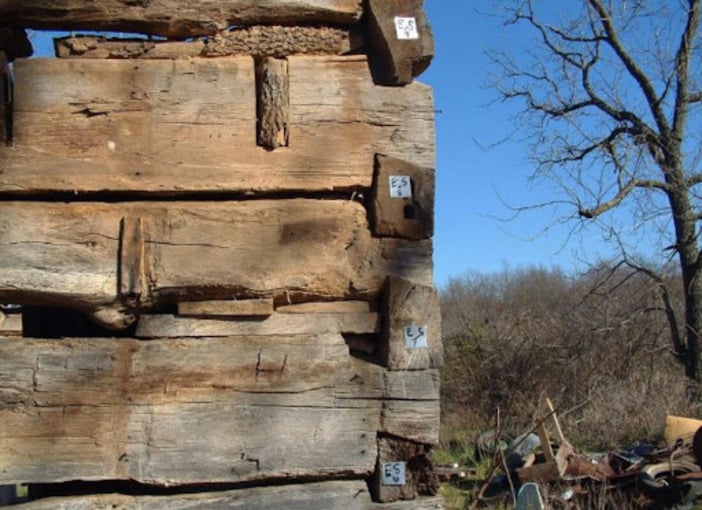
Richard, a mathematician by trade, is a meticulous thinker. He believes in good planning and execution. Therefore, he devised a simple system for transporting the old bones of his cabin. You can see the markings he made on the side of each plank here.
His system was simple and straightforward, but without it, putting the cabin back together piece by piece on the other end would have been a real nightmare. It goes to show how much a little prep time can grease the wheels of progress.
Richard’s System
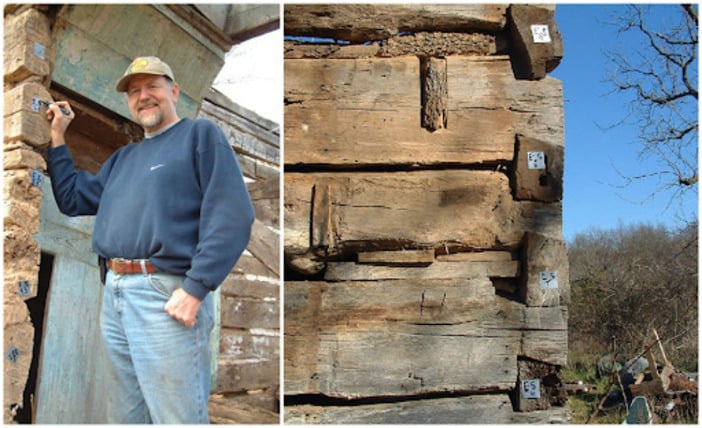
The logs were labeled on both ends according to three points: their location on the original site, the direction they were pointing at, and their level. For example, the north side, pointing east, level three—the west side, pointing south, level five—and so on.
This system is exhaustive, simple, and basically foolproof. Even if the logs got mixed up in transit, Richard would be able to slot them together like an Ikea table. There’s no room for ambiguity when it comes to construction!
Moving The Wood
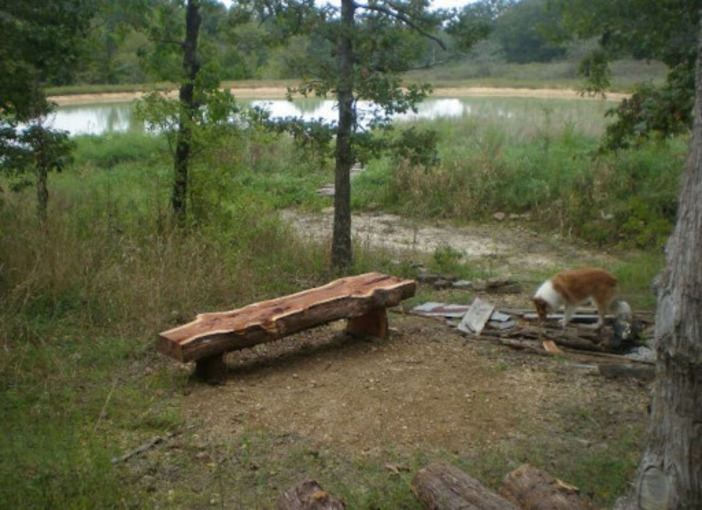
With the non-rotten wall beams salvaged and marked up for transport, Richard could ensure that his cabin would retain its authentic, old-timey rustic flavor. The soul of the cabin was being moved to a new location on Richard’s property. And just look at this vista!
It seems like the perfect spot for a countryside escape. Doesn’t this dream just stir in the heart of every red-blooded American? The chance to live out your days on a homestead built by your own hands, sweat, and tears?
The Cabin’s Foundation
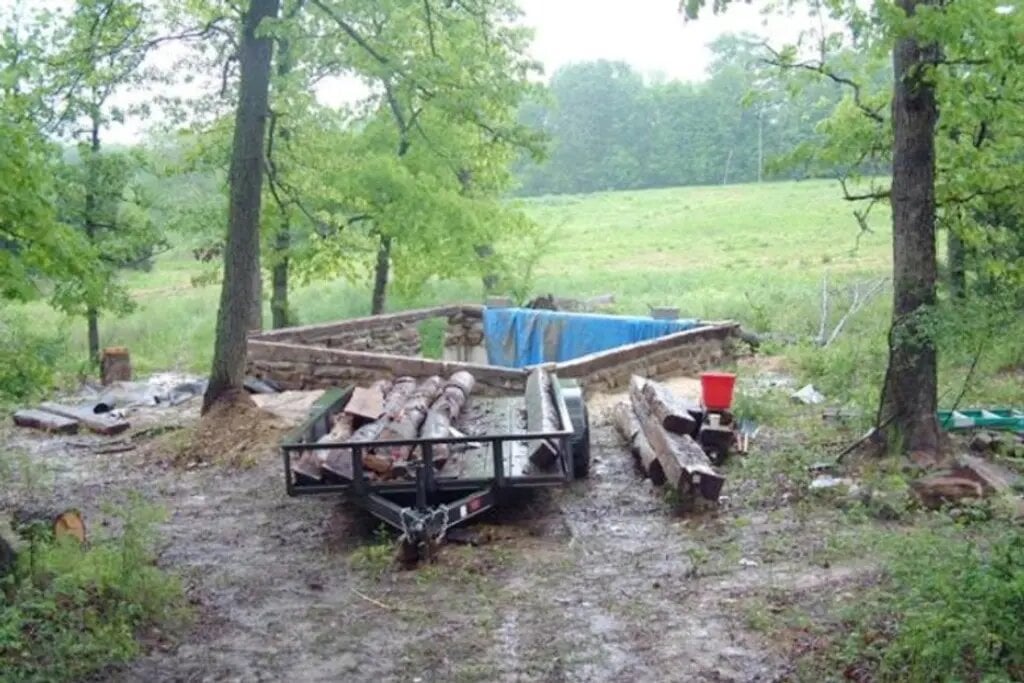
Richard had consulted Two Bears, a member of the Sioux Tribe, for help. His methods of removing the oak beams proved effective! No machinery was necessary, either.
The logs were ready to be transferred, although the new land needed some prepping before the installation could be completed. Richard, along with his helpers, dug five feet deep to reach the rocks. He would then use those rocks as the cabin’s foundation.
Digging The Spring
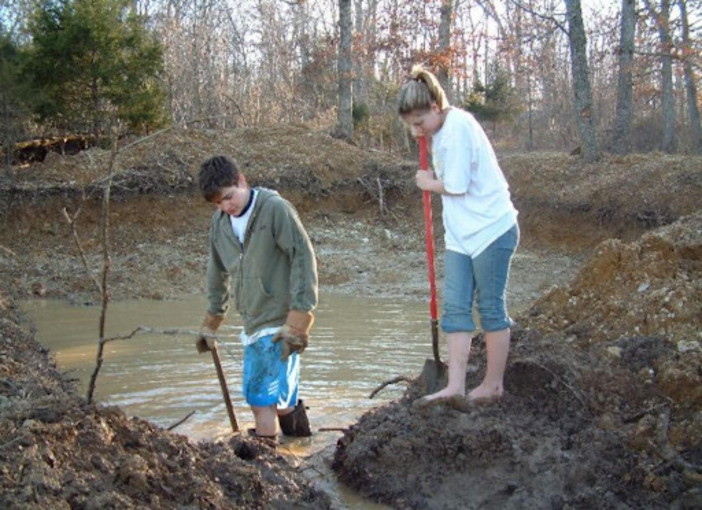
The location wasn’t just beautiful, but there were many natural resources nearby—including spring water. Here are Richard’s kids digging out a water flow. Of course, they had been helping out, too. They were probably excited to have their own family cabin!
Of course, they probably had no idea how long it would take to put it together. Just clearing up, sizing up the damage, and moving the pieces had taken many months of work. There would still be much to do!
Putting The Pieces Together
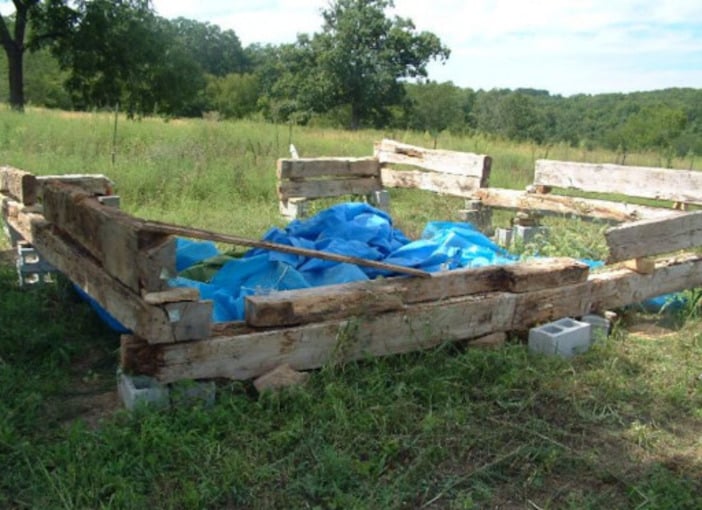
Finally, a spot was chosen for the cabin. Richard’s system had worked just as perfectly as he had imagined. The frame of the cabin was laid down. But Richard suddenly stopped the work. He realized the cabin was missing something.
He wanted a basement to go underneath—for food and supply storage. That meant digging out a pit. However, after digging a few meters down, Richard hit a problem—literally. Bedrock was stopping him from going any further.
Greater Foundations
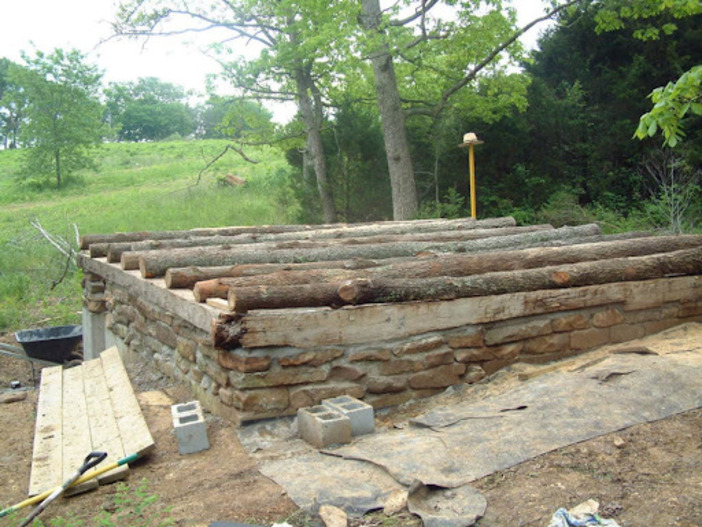
If the ground would not capitulate, then Richard would have to raise the basement roof! Rather than plant his shack on the ground as it had been done in its original sport, Richard gave it a solid stone foundation.
This part of the build had a little help from modern construction techniques—a little cinder block and cement work. Still, the cabin wasn’t a historical recreation. It had to be comfy for him and his family. Plus, the extra height had a big advantage.
By The Waterside
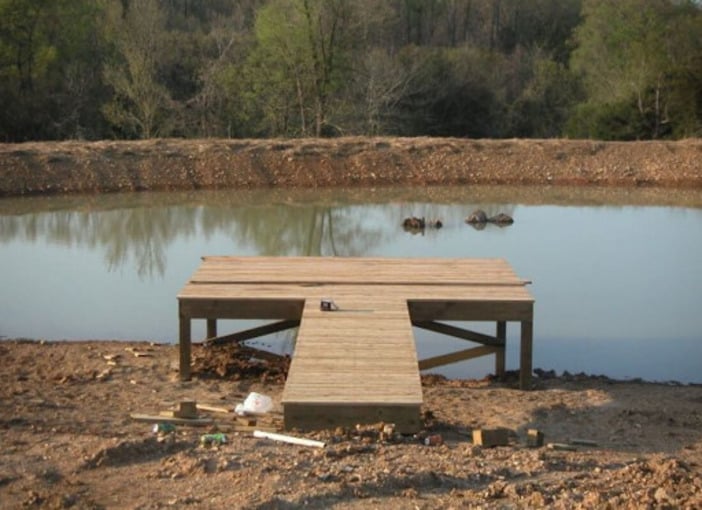
With a stone foundation and thanks to the extra height of the floor, the cabin would be in less danger of flooding should the lake over-fill. And since they had moved the cabin so close to a lake, they decided to build themselves a little lakeside platform.
A cool waterside spot can really help manage the heat in the summer. If there were any fish, it would make a great spot to hang out and see if any would bite. Richard picked the new site perfectly.
Going Up!
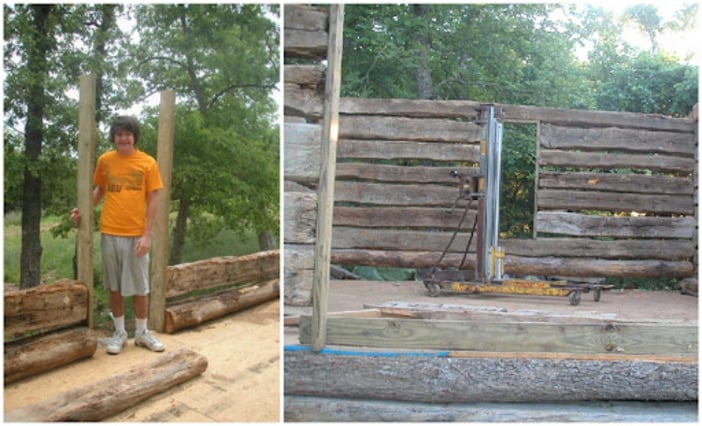
With the foundations laid, Richard and his family got to work putting up the walls and fixing the door frame. With his markings, this took no time at all. Richard’s son was there to witness the transformation of a stone floor to the making of a woodland home.
Richard put on his lumberjack hat and cut down a few nearby white oak trees to make the cabin’s floor joists. You can see his son here in the picture admiring the cabin’s new door frame, probably trying to imagine what it would all eventually look like!
On The Level

By this point, many years had passed. But now, with the basement done, the cabin itself wasn’t just an imaginary structure! Here you can see the lower part of the cabin with an entrance to the basement. Richard looks like he’s finally having fun here!
It looks like there’s plenty of space for bottles and cured meat and whatever else the family wants to store under there. Richard’s many years of hard work were finally about to pay off. That door still looks like it’s pretty high up, though!
Raising The Roof

Richard used some nearby split cedar shakes as shingles for the roof. Look at them go up! These beams will likely last much longer than the original cabin’s roof. The whole family pitched in for this tricky step in the building process.
This was also one of the trickiest aspects of the build. Everything had to be installed perfectly. Luckily, Richard knew what he was doing at every stage, from planning to execution.
Standing Proud
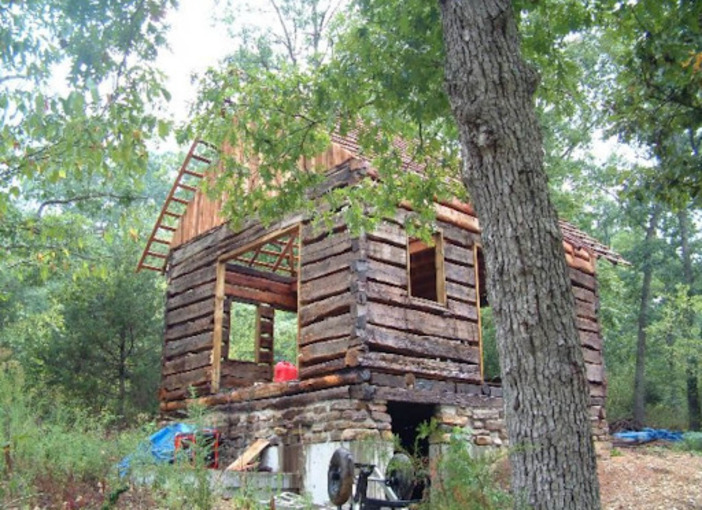
With the bones of the roof up, the cabin was starting to look more like a home. Look at this beautiful 1800s cabin reproduction standing proud in glorious nature. Besides the blue tarp and construction equipment, it’s almost looking perfect!
You might have thought that the big opening is for a pair of double doors or a window, but it’s not. Can you guess what Richard had in mind here? If not, don’t worry—you’ll find out soon. But first, let’s attend to that front door!
A Little Shade

What’s a cabin in the woods without a porch and a little cover for shade from the sun’s rays? The porch itself looks a little high and will definitely need a set of stairs, but at least now, nobody will walk outside and take a face dip in the dirt.
The side of the roof has been finished, too. And it looks great! Wouldn’t it just be amazing to fast-forward and see what lazing around in summer and watching the kids having fun in the local lake would be like?
Forward And Back
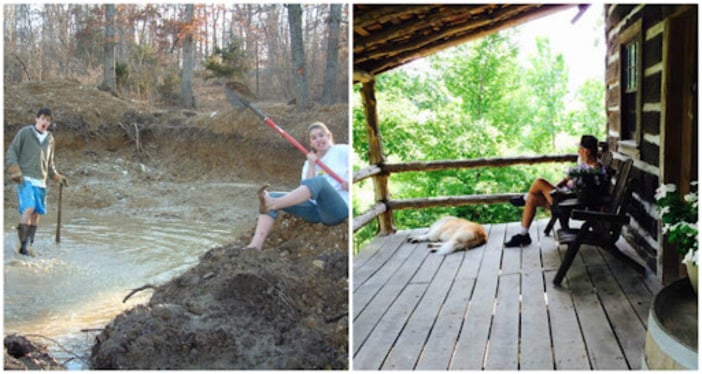
With the power of editing, we can get a glimpse into the cabin’s future! It looks like the perfect spot to hang out in when the sun is hot, and the air is sticky and thick—in other words, summer. It’s the perfect getaway location!
The kids aren’t exactly having fun by the lake, but they’re having fun by the water. This photo was taken when they were helping their dad with digging the spring. They’re such helpful kids! It’s a good thing Richard was able to get their help over the years.
Minding The Gaps
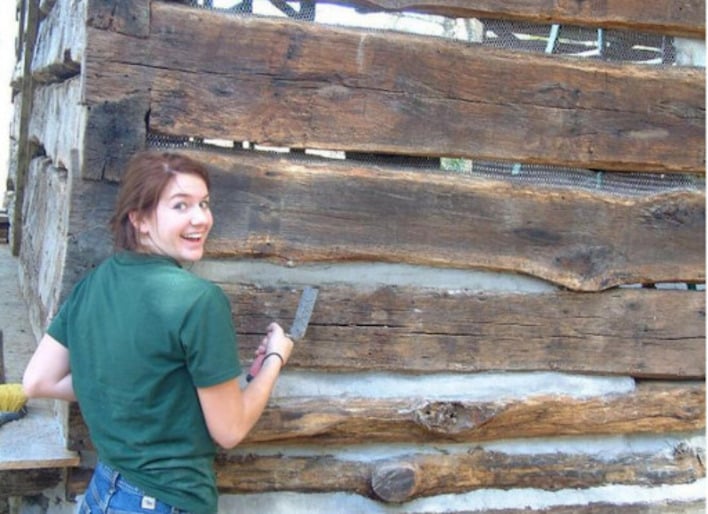
The final touch to the cabin’s walls was the gap filler job or “caulking,” as it’s called in construction. Without filling these holes, the cabin would just be a glorified hovel! They used a traditional recipe of sand, Portland cement, and lime over some chicken wire.
The traditional recipe uses “hog bristles,” but according to Richard’s daughter, they couldn’t find any, so they just had to make do. It looks like it worked a treat! Now the inside should be as snug as a bug in a rug!
Smoothing Things Over
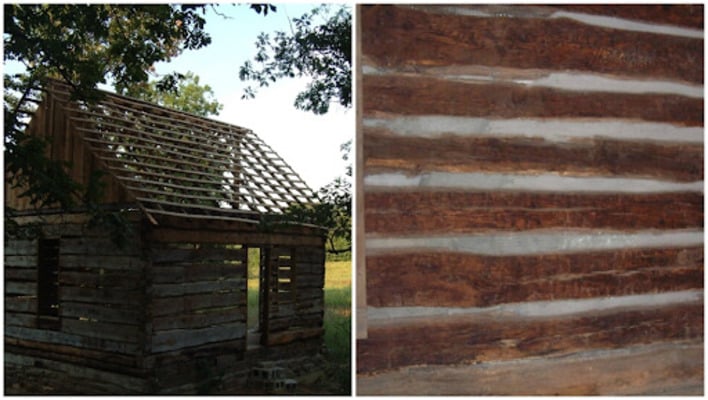
The caulking was complete. The logs still gave the building that classic, rustic aesthetic that had inspired Richard to begin this project all those years ago. Almost a decade had passed, but the cabin was almost ready.
Richard and his family used some of the leftover fresh logs to shingle the roof. Now rain or shine, the family would have a big smile on their faces while inside. This diamond-in-the-rough antique was getting fast-tracked on its way to becoming livable.
Planning Pays Off
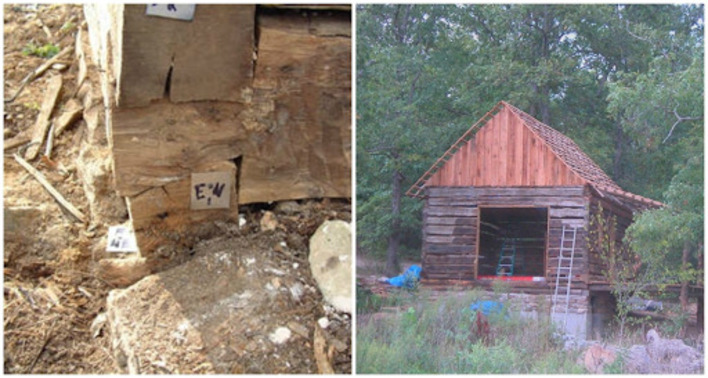
The project has come a long way since Richard originally had to shovel all that old cabin junk into the dumpster and mark up the planks. The days were long, and the bumps in the road were bumpy, but it was all coming together.
With the roof complete, there was only one more big part of the cabin to build up. Have you guessed what that gigantic hole in the wall is yet? If you guessed “fireplace” or “hearth,” you’d be right!
Bricking Up The Hole

With the walls caulked and the wind sealed off on the outside, it was time to build something that would keep Richard and his family warm from the inside, especially in the winter months. Here are the raw materials for a majestic hearth.
Granted, it doesn’t look majestic yet—it’s just a pile of bricks waiting to be put into something—but just watch and see what the Aiken family managed to build with them! Read on to find out what the heart of their home looked like.
Hearth And Home

Wow! What a fireplace! This isn’t just a pit for a little bit of fire—it’s a stage for a magnificent blaze! What would a cabin be without the warm, appealing crackle of the fire? Once again, credit to Richard and his family for crafting such a top-notch build.
Richard and the family chose a Rumford-style fireplace for their cabin hideaway, one for its great design and two because they’re a classic. The Rumford saw most use from the 1790s to the 1850s, making it a perfect fit in their rustic recreation.
Stairway To Heaven
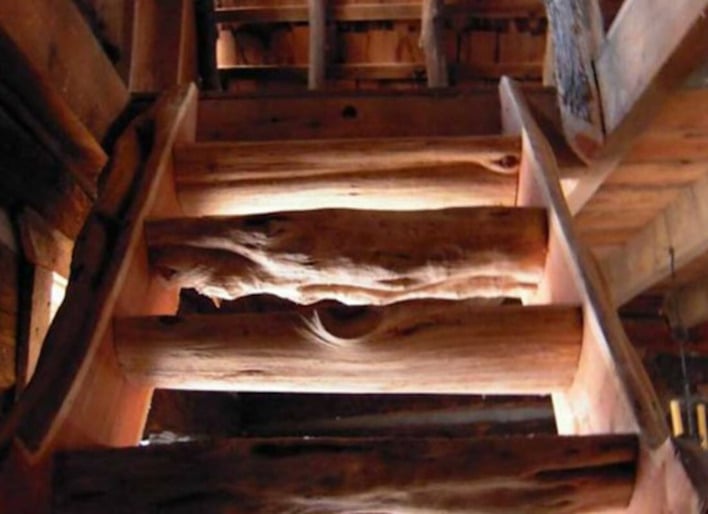
So far, we’ve only seen the outside of the cabin—but just take a look at this beautiful interior, starting with the wood-cut stairs. What a work of art! Each step was literally cut out of a piece of the unused cabin wood—every knob and groove a reminder of nature’s bounty.
The staircase leads to the second floor, which, thanks to the roof, expands the size of the property. Richard expertly smoothed and sanded out each part of the log without losing any character on each and every one. Such exquisite carpentry!
The Cabin Had No Electricity Or Plumbing
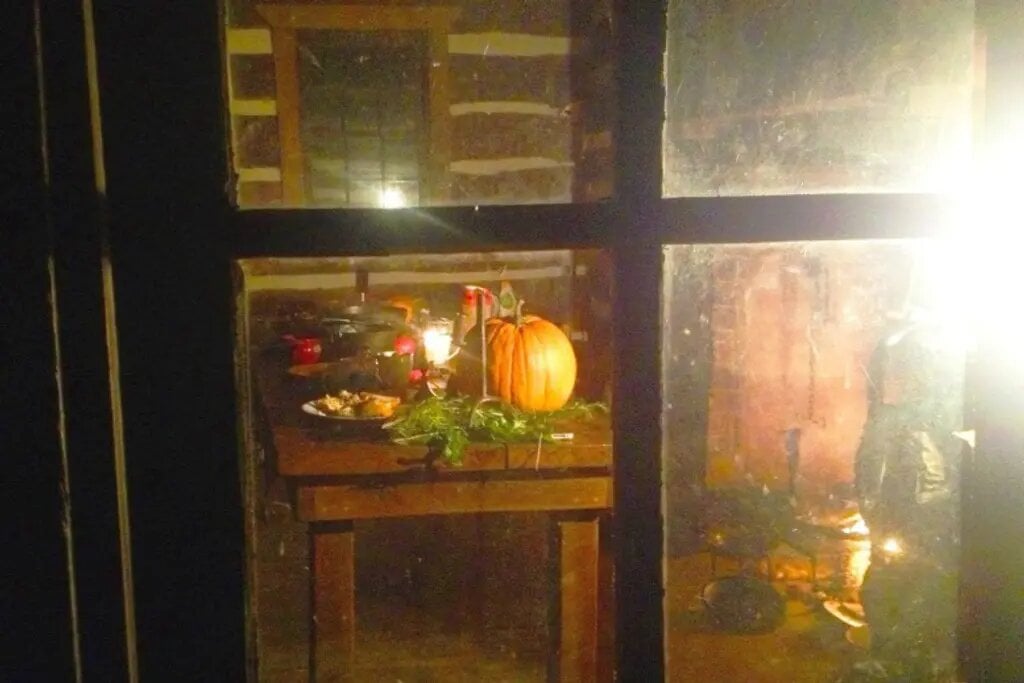
The cabin was really coming together nicely. The porch was completed, the windows and doors were installed, and the staircase was intact. Richard’s dream cabin was nearly ready to be lived in, but there was one thing.
Richard wanted to stay true to the cabin’s old history and its structure, which is why he decided to not put in any electricity or plumbing. It was important to Richard that he remained faithful to the 1830s style of the cabin and back-to-basics! Don’t worry, though. He and his family had another house not too far away that had all of that installed.
More Than A Door
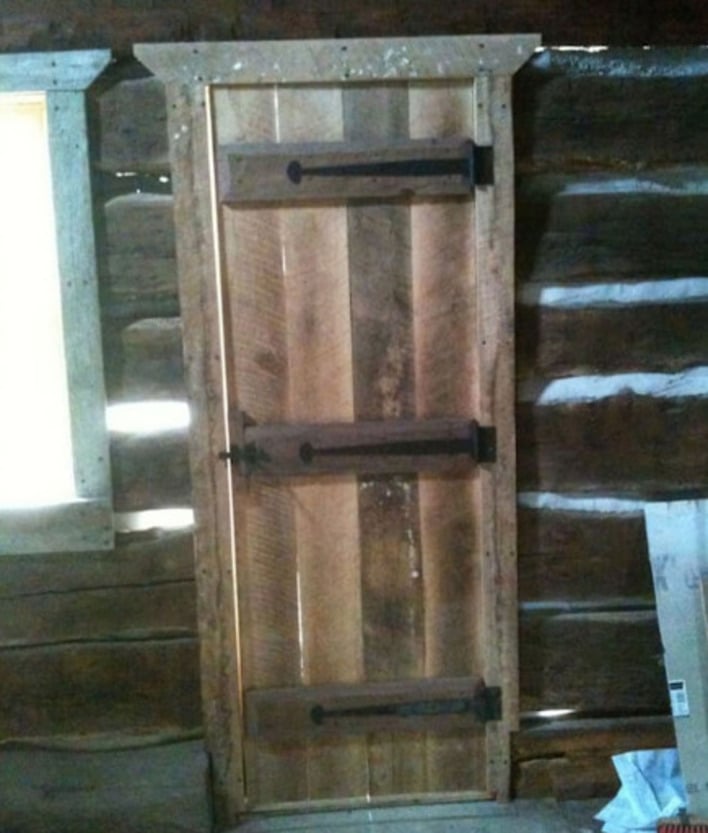
A door isn’t just a door—it’s an introduction to the interior (or it’s a firm goodbye)! In either case, this door is perfectly suited to Richard’s restoration vision. The door was crafted by a carpenter with a design the family had commissioned.
Some of the materials that Richard had managed to salvage from the old cabin went into this production. The iron bars obviously had to be made new. This is the perfect “first impression” item to be added to the cabin. It fits the overall design so well.
Filling the Holes
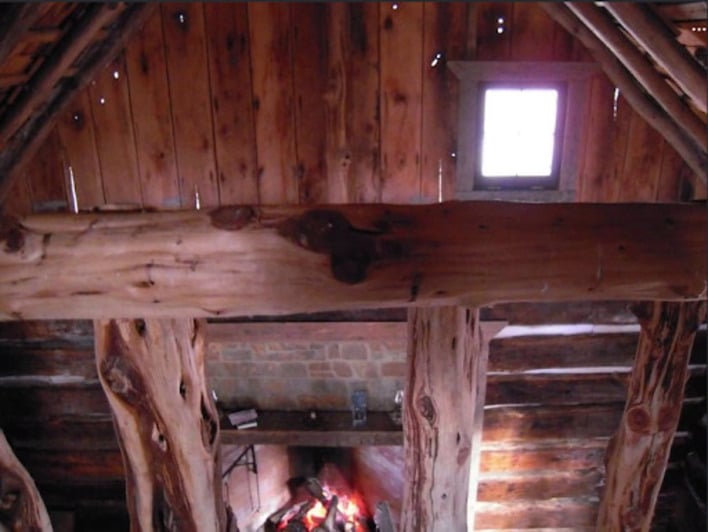
The wood that Richard took from the original cabin building was intact, but it did have its problems. This picture, taken by his daughter, shows how holes riddled the walls, opening the cabin to the elements.
Thankfully, the family managed to square away these leaky holes in time for the winter. And check out that fireplace in action! It looks like the family has already started moving in at this point.
The Grand Tour

The artistry on the cabin is impressive, but check out all the furniture on the inside! From the chairs to the dining table, everything looks as if it came straight out of the 1850s—a quant, cozy picture, to say the least.
Everything looks so polished and smooth, too. It may be a cabin in the woods, but there’s no reason to rough it! The cabin has gone from a gloomy, halfway-built shack to the perfect retreat for any season. Let’s take a closer look at the details.
A Dining Table For Champions
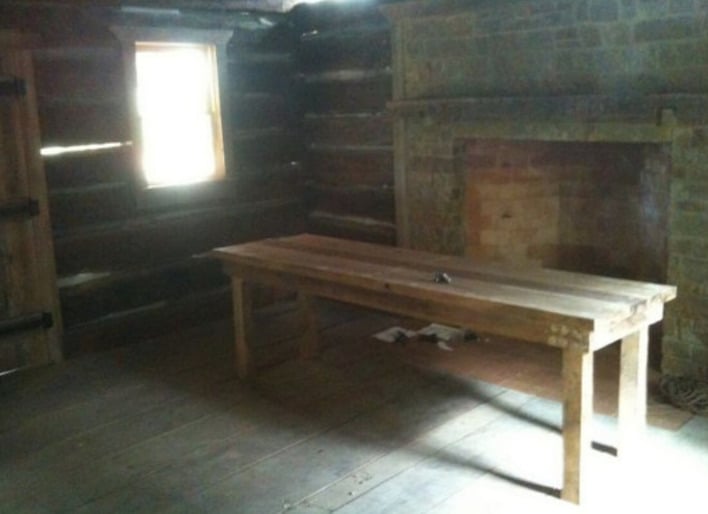
What’s a good fireplace without a good table to sit around and warm up next to it? This is where the feast of home-grown vegetable stew and home-baked pie happens. The table looks light and easily maneuverable, too, so there’s an easy way to make space.
As well as being light, it looks like it can generously house the whole family while they sit around the fire. This is a shot of the table before it got a lick of varnish. It’s elegant and simple, and the materials used were locally sourced. Best of all? It was a gift from the neighbors.
Let In Some Sunlight!
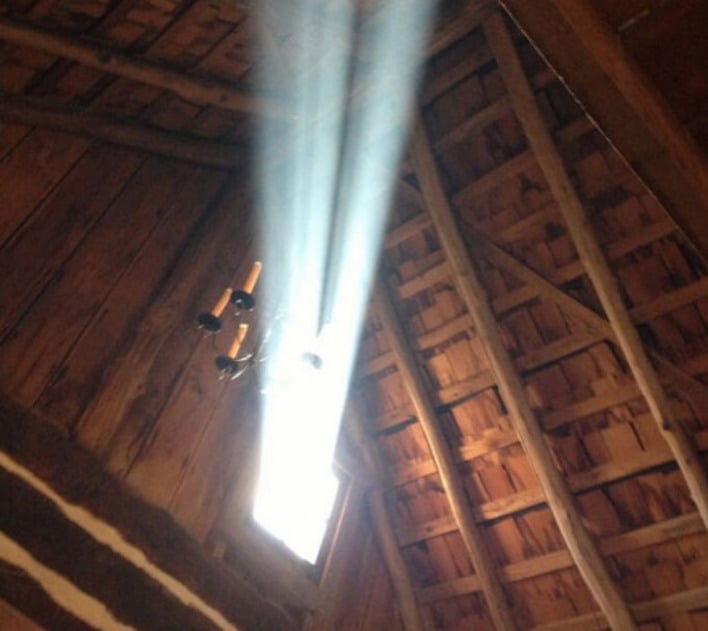
Here’s a nice shot of the morning sun shining into the cabin from the upstairs level. In the daytime, there’s no lack of visibility, thanks to the window. With no electricity, it was important to think about details like this. As is evident from this picture, candles take care of the light after dark.
What an incredible feeling it must be to wake up in a structure of your own design by natural light, surrounded by the tranquility of nature. It’s one heck of a way to spend your retirement! And a beautiful one, at that.
The Upstairs Cot
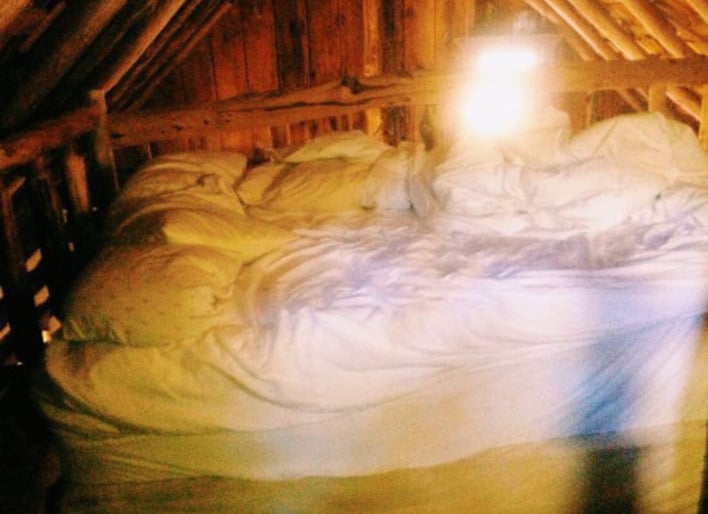
Here’s the bed upstairs—a place to rest after a long day of reflection in the woods or a place to sleep like a babe during the night hours. The smell of the wood and the warmth of the fire in the room below must make this a relaxing experience.
Thankfully, Richard didn’t go with 1850s-style bed sheets—it looks like he went with something a little more modern and comfortable. Going off this picture, it looks like the coziest spot to sleep in the world.
The Cooking Pot
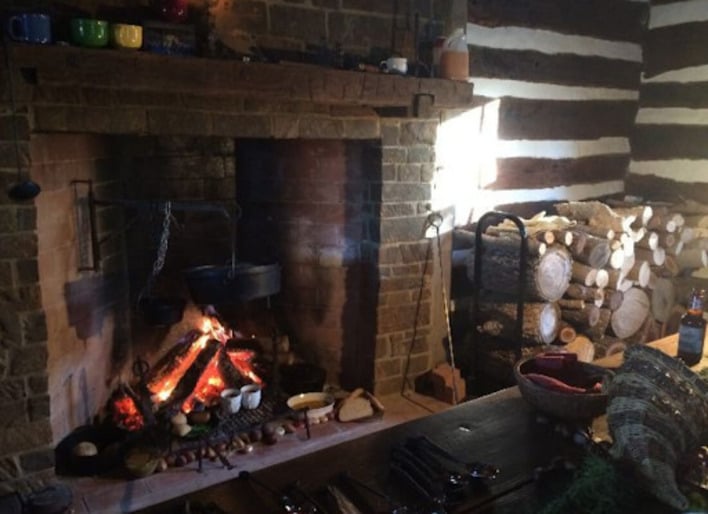
Who could resist a bubbling pot of stew from this pot? Imagine wood-cooked soup, beans, or hot cocoa from this kitchen! Yum! It would really make you feel like you’re living in a cabin two hundred years ago, living out the homesteader’s dream.
There’s a splash of color on the mantlepiece from the mugs and stacks of wood lined up, ready for burning. On a cold winter’s day, this would be a blessing. It would absolutely feel like a home away from home.
The Interior Was Beyond Magical

The fact that there was no electricity in Richard’s cabin made it much more charming and cozy. The flooring was dark and rustic, locally milled from the majestic white oak trees that surrounded the area. These oak pieces were put on top of a composite plywood-type floor — they sat on the floor joists above the foundation.
The moment Richard stepped into his new home, it felt like he had gone back in time. Since he only needed the bare minimum to survive and be content, the cabin was a safe haven from all of the activity in the outside world. And, those candles weren’t the only source of light!
So Much Magic And Warmth
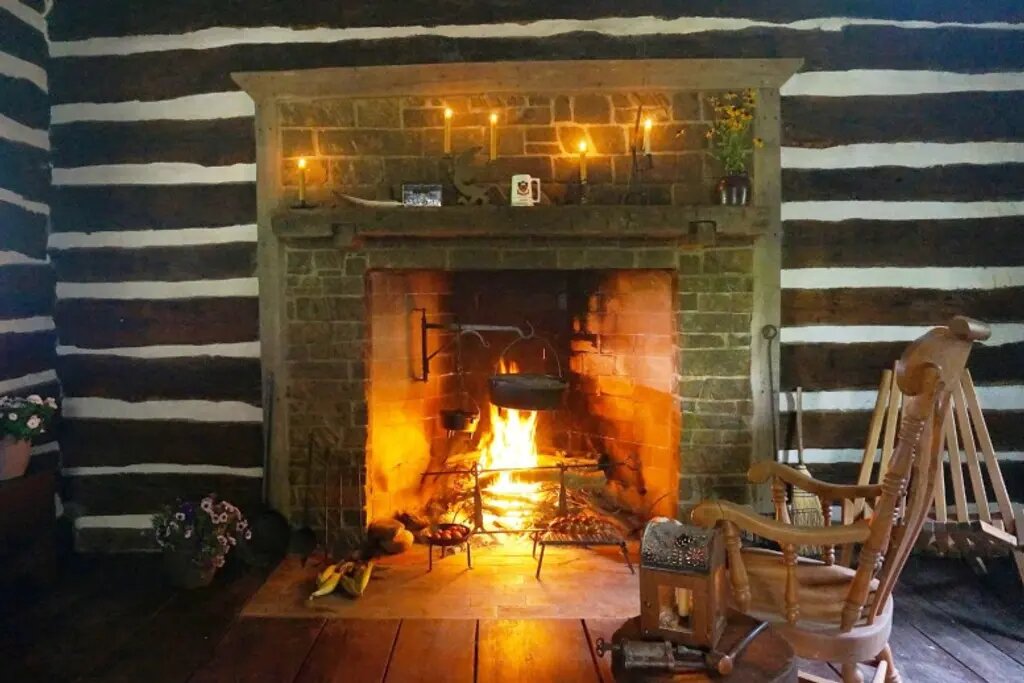
To be as efficient as possible, Richard designed the fireplace himself. He hadn’t done anything quite like it before, so it required some planning and focus. In his video, he shared, “Fiery golden Hackett stone from Arkansas faced the interior of the fireplace.”
Since it wouldn’t be an average fireplace, Richard put lots of time and extra effort into making it special. He wanted to use it for cooking, just as the folks in the 1830s did.
He Wanted To Do Fireside Cooking
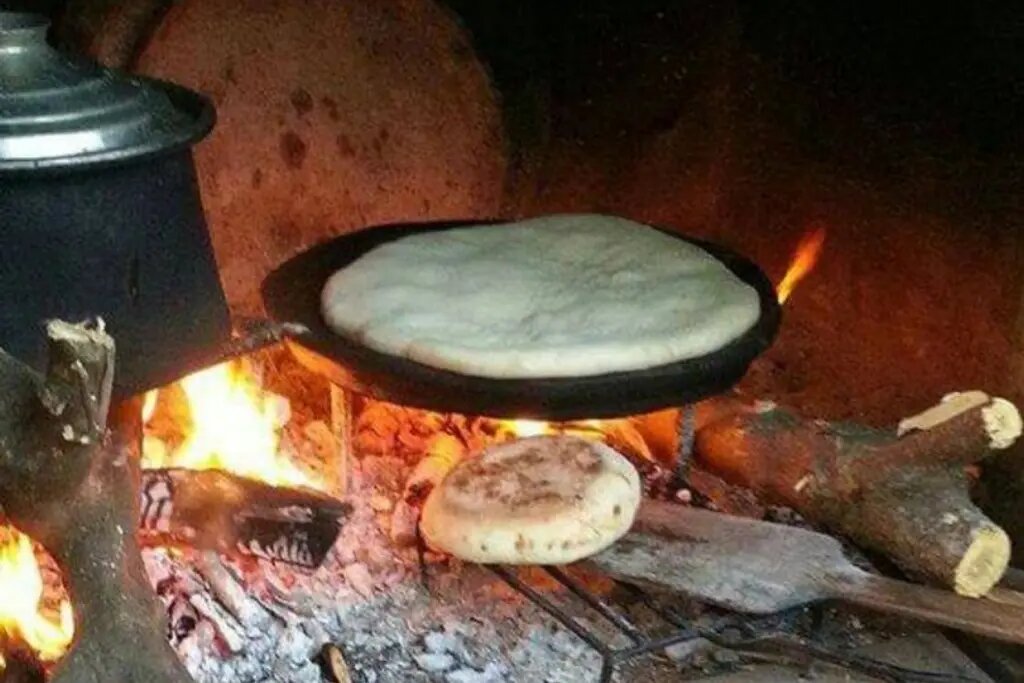
Although bundling up with some hot cocoa by the fire sounds lovely, Richard intended for the fireplace to have more than one designated use. He wanted it to serve its purpose as an old-fashioned kitchen appliance, which was also known as “hearth cooking.”
Richard saw hearth cooking as another way of going back to the basics and not taking too much from nature. His deep love for animals and nature made sense with this practice. He enjoyed roasting vegetables and baking bread with “the magic of the fire.” Outside, some food prepping also occurred.
The Backyard Was Beautiful
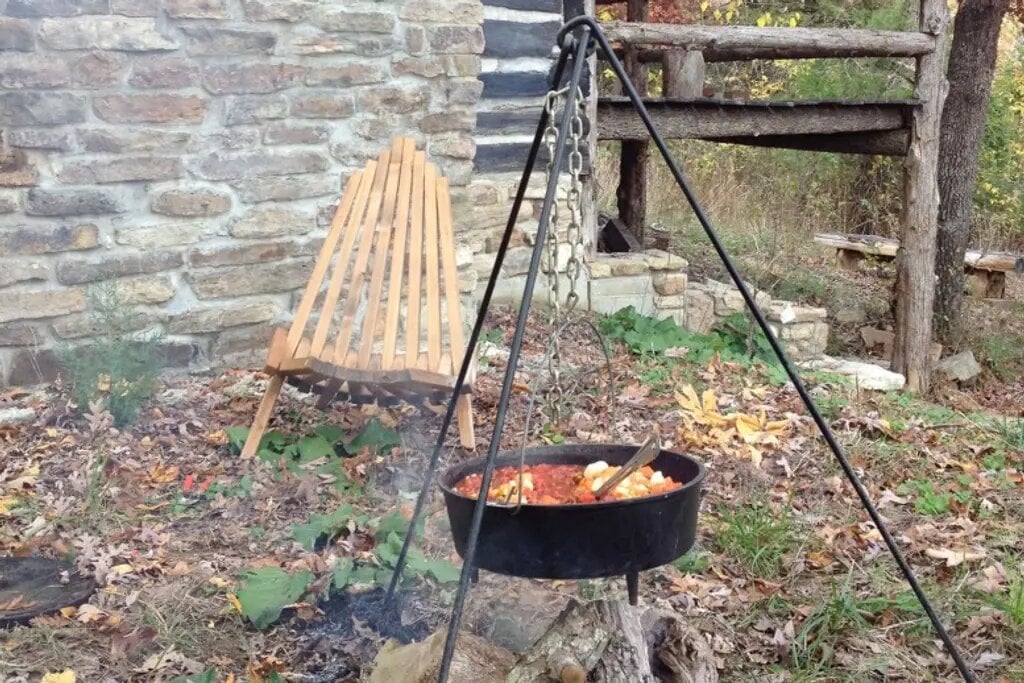
The cabin’s interior was warm and inviting, but Richard wanted to spend just as much time outdoors. He did, after all, made the decision to live in nature. He developed an old-fashioned structure for cooking food over a fire, which was located right near the porch.
Due to the wonderful views that surrounded them, as well as the lake, Richard and his wife decided to have the front of the cabin facing north. It’s not a surprise that the view would only become more pleasing to look at over time.
Family Celebration
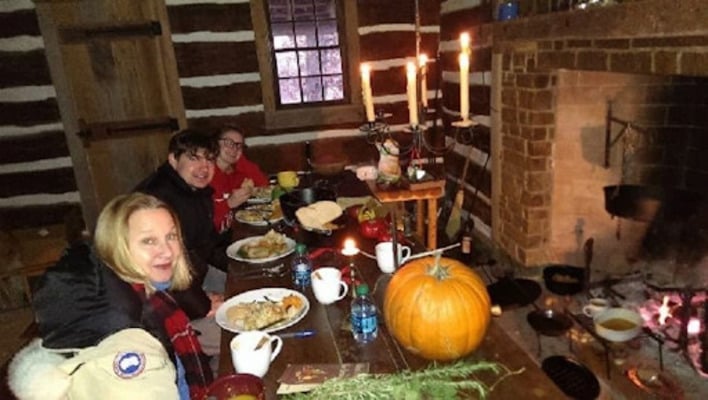
But what’s a home without a loving family? Here they are with a big old pumpkin on the table, eating some delicious home-cooked food. All their hard work over the years is now behind them, and they can enjoy the fruits of their labor.
Richard is well-known for his veganism, so we’re sure that this meal was as animal-friendly as it was tasty! And could that be some kind of mulled wine with cinnamon in that mug? The candles are such a magical touch. Pass the meat-free gravy!
Happy Thanksgiving!
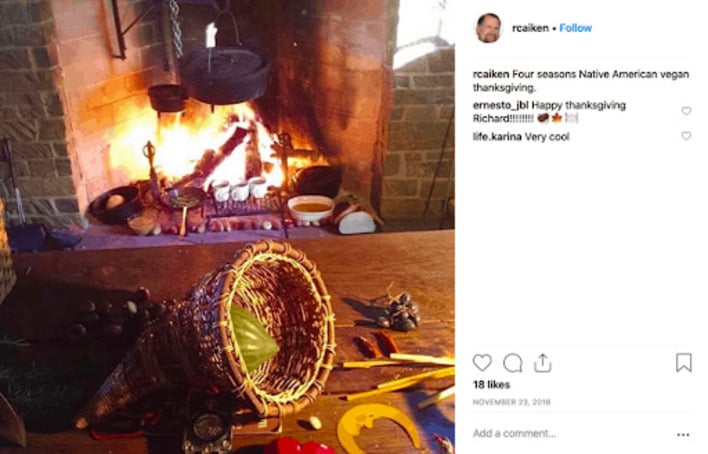
Here’s a shot of the family at Thanksgiving, enjoying all the bounties of their years of hard work. Here’s Richard posting a shot of the fire with a cornucopia of treats and a few grapes in the foreground. The fire is really roaring!
The fire must really be warming those cocoas up something fierce! Richard is also showing off his vegan cooking skills, too. What an incredible experience it must be to serve Thanksgiving dinner in your own antique-restored wood cabin!
Plenty To Be Thankful For
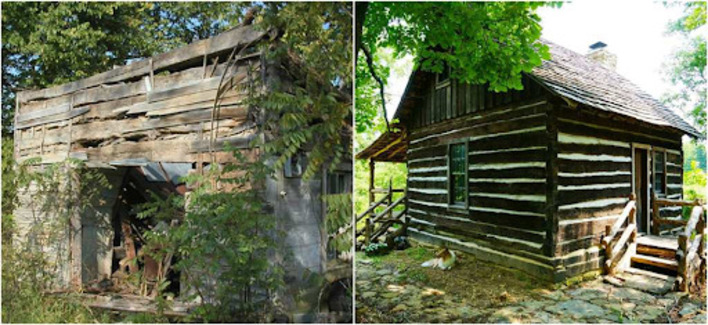
If you’re looking for something to be grateful for, here’s a good one: “thank you for my life, thank you for the work I have been given, and thank you for the tools I need to complete my work.” Richard certainly relished in all the work necessary to turn this ruin into a ruby.
Look back at the state of the cabin before its grand restoration. Richard added stairs on the front and back. There’s an extra level of polish to the design that goes beyond pragmatic construction. Aren’t people amazing?
The Candle’s Glow
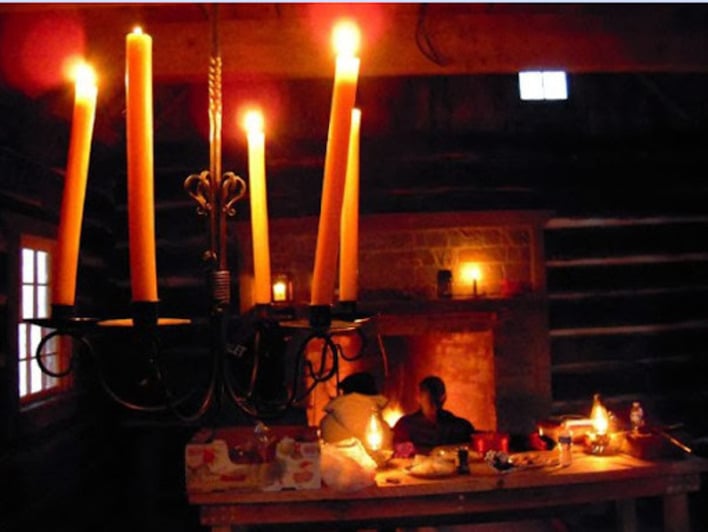
Richard’s daughter took a few artistic shots of the cabin to mark the ten-year anniversary since her dad began work on the project. This is just one of our favorites. The candles certainly lend a cozy feeling to the room.
It looks like the family has no end of feasts in this place—making memories that are sure never to be forgotten. Wouldn’t it just be amazing to host a dinner party here or have friends and extended family over for a barbeque?
Under Blankets Of White
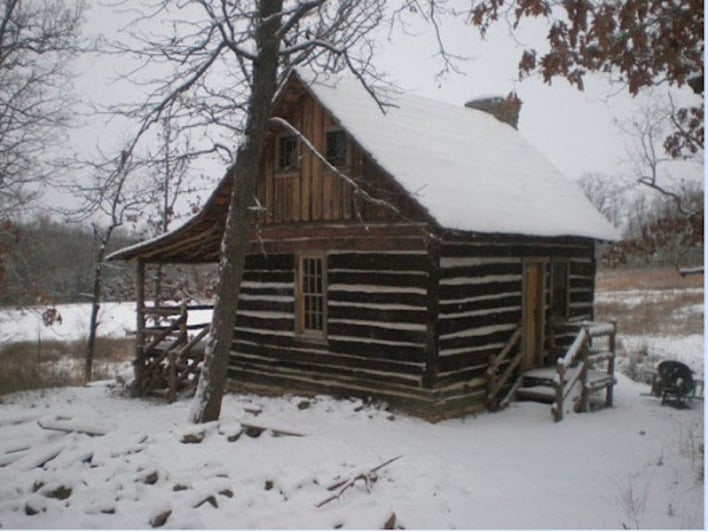
Who doesn’t love a white winter scene where you and your family can enjoy that crisp vista of snow that blankets the earth at the end of the year? Especially if you happen to have an amazing place to stay, feast, and host!
It’s a picture straight out of a storybook. The cabin looks as if it’s standing the test of the elements well. When the days get darker and the nights colder, imagine being able to retreat to this reclusive home. Ah, delightful.
Right Out Of A Painting
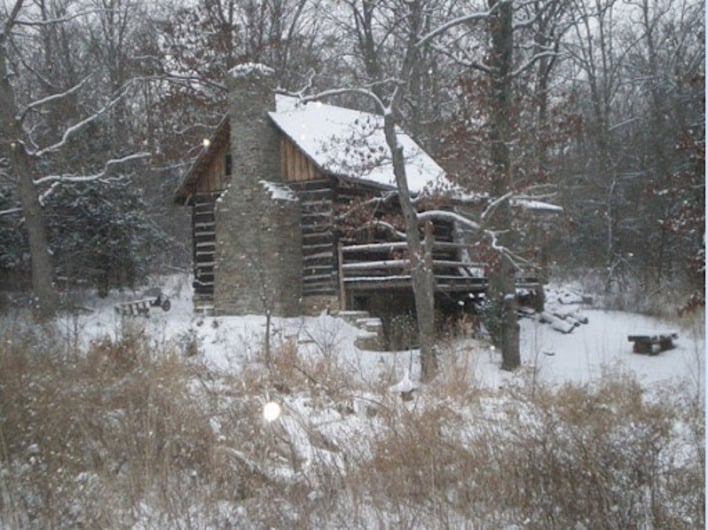
Could this cabin look any more amazing? Here’s a shot of the chimney in its full majesty and the balcony with the railings installed. The only thing missing are puffs of smoke from the top of the chimney stack. That would make a quaint little postcard!
We hope the Aiken family shares many happy memories together here at any time of year. Richard’s kids must be so proud of their dad for his great achievement—artistic, historical, and personal achievement. What an inspiration he must be.
A Job Well Done
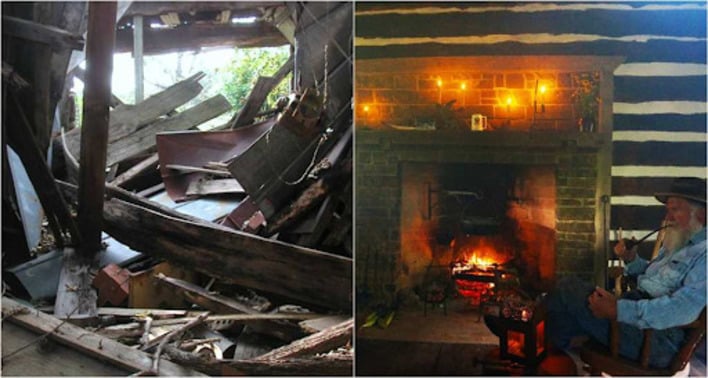
Of course, Richard had a lot of help over the years while rebuilding the cabin. But just look at the mess of work he had to contend with in order to make his dream a reality. It goes to show that if you set yourself a goal, break that goal up into achievable bites, and go for it—you can do anything.
Here he is, taking a long-deserved rest, smoking a pipe by the fireside, perhaps dreaming up some new invention of mathematics, looking back on fond memories, or taking in the rich atmosphere of his prized cabin.


